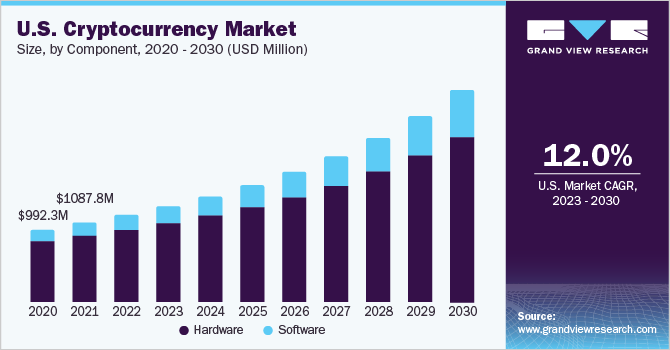Web3 marketing is one of those industry niche terms that you may have heard of but never really defined. What is it, and how does it work? In this article, we explain web3 marketing, what it means, and how to use it to your advantage.
Understanding web3 marketing

Web3 marketing is the strategic promotion and crypto branding activities that leverage decentralized technologies and blockchain-based platforms to engage and attract users within the emerging decentralized web ecosystem.
If you have been in crypto for a while, you are more than likely familiar with the promise of migrating everything from web2 into web3. Web3 marketing is the deliverance of this promise. It is one of the fields of activity that is solidifying cryptocurrency and blockchain as a field that is here to stay.
Defining web3 and its principles
Before you dive into web3 marketing, it’s important to understand web3. The principles of web3 stem from the Cypherpunk movement. The movement was a user-centric subculture that emphasized the importance of digital rights and socio-political change through cryptography and privacy-enhanced technology.
Similarly, web3 is all about user-owned data, privacy and security, and the removal of intermediaries. Web3 refers to the idea of a decentralized internet that is built on open protocols and distributed technologies, giving users more privacy, control, and ownership over their data and digital assets. Some of the features of web3 include:
Sponsored- Decentralization
- Censorship resistance
- Privacy
- Immutability
- Tokenization
- User-control
Find out how BeInCrypto can boost your crypto project today – contact us.
Evolution from web1 to web3
Web1 refers to the early days of the internet, often referred to as the read-only web. It was primarily a static and one-way communication platform where users could consume information but had limited opportunities for participation or interaction.
Static HTML websites, a lack of user-generated content, and minimal interactivity characterized Web1. Websites were typically created and controlled by a select few entities, and user engagement was limited to browsing and consuming information.
The limitations of web 1 led to the development of web2, often referred to as the read-write web or the social web. Web2 brought about significant advancements by introducing dynamic and interactive features, enabling user-generated content, and facilitating social interactions.
Web2 platforms, such as social media, blogging platforms, and online communities, empowered users to create and share content, participate in discussions, and connect with others in real-time. Companies like Google, Facebook, and Twitter emerged as dominant players, driving the growth of web2.
Web2 revolutionized the way people communicate, collaborate, and share information online. However, it also introduced new challenges, including issues related to privacy, data ownership, centralized control, and reliance on intermediaries. These challenges paved the way for the emergence of web3, a vision of a decentralized and user-centric web.
Web3 represents the next evolution of the internet, characterized by decentralized technologies, blockchain, and cryptocurrencies. It envisions a web where individuals have ownership and control over their data, digital identities, and online interactions.
It seeks to establish a more open, transparent, and inclusive Internet ecosystem that empowers individuals and fosters innovation while reducing dependence on centralized authorities and intermediaries.
The impact of blockchain technology
Blockchain technology is the glue that holds web3 together. Initially, it aimed to solve one of the problems of web2, the centralized issuance of currency. However, as time moved on, its usage quickly expanded. The beauty of blockchain is that its unique use of cryptography, game theory, and distributed databases allowed it to adopt unforeseen uses. So much so that now many banks, nations, and businesses have integrated it into real-world applications.
This usage has added to the value of cryptocurrency’s market capitalization. In late 2021, the total cryptocurrency market cap reached over $ 3 trillion. This monumental event added to blockchain’s staying power as a nascent technology.

According to Grand View Research, the worldwide market is expected to experience a compound annual growth rate (CAGR) of 12.5% by 2030.
Key features of web3 marketing
Decentralization and trustlessness
Technologies, such as DApps or blockchains, can enable decentralized marketing ecosystems. Smart contracts can be used to automate and verify marketing agreements, ensuring transparency and reducing reliance on intermediaries. DApps can facilitate peer-to-peer interactions between marketers and consumers, fostering trust and eliminating the need for centralized authorities.
For example, ad companies like Google have a centralizing factor in the online advertising ecosystem due to their dominance over the majority of the digital advertising market.
The Brave browser attempts to address these issues by offering an alternative model that shifts the power back to users. By blocking third-party ads and trackers, Brave reduces the dependence on centralized ad networks like Google.
Sponsored SponsoredEnhanced user privacy and data ownership
Web3 technologies emphasize user privacy and data ownership. By leveraging blockchain and cryptographic techniques, marketers can implement privacy-preserving solutions, giving users control over their personal data.
Zero-knowledge proofs and decentralized identity systems can be utilized to enable targeted marketing campaigns without compromising user privacy.
Smart contracts and tokenization
Smart contracts, a key feature of web3, can revolutionize marketing agreements and transactions. Marketers can leverage smart contracts to automate payment mechanisms, establish performance-based incentives, and ensure transparency in advertising campaigns.
Businesses may find it simpler to track the success of their marketing campaigns and make data-driven decisions with the help of blockchain technology. Smart contracts enable businesses to track the outcomes of their campaigns automatically and analyze the data in real-time, giving a more accurate picture of their marketing efforts.
Community engagement
Web3 also encourages community participation and governance. Marketing agencies can leverage community-driven platforms and decentralized social networks to engage directly with users, gather feedback, foster brand loyalty, and promote crypto community growth.
Token-based incentivization models can be used to reward community members for their contributions, encouraging active participation and word-of-mouth marketing.
Exploring web3 marketing applications
Decentralized advertising and digital campaigns
In traditional digital advertising, a limited number of major ad exchanges act as intermediaries between advertisers and publishers. For example, when it comes to YouTube marketing, content creators are the publishers, the companies that come to YouTube for ad space are the advertisers, and YouTube is the intermediary.
These exchanges control the flow of data and employ algorithms to match advertisers with available ad inventory. However, the inner workings of these exchanges, including their algorithms and decision-making processes, tend to be opaque and not easily accessible to advertisers.
In contrast, under decentralized advertising in a web3 context, the vision is to have a network of micro exchanges that communicate with each other. Rather than relying on a central authority or a few major exchanges, advertisers would have their own micro exchanges or platforms.
These micro exchanges would interact and communicate with each other within a network. Instead, the network and its participants would collectively coordinate and facilitate the buying and selling of ad inventory.
Tokenized incentives and rewards
Tokenization of digital assets, such as loyalty points or access tokens, can enhance customer engagement and enable new forms of value exchange within marketing ecosystems.
SponsoredIt can be used in blockchain marketing and NFT marketing to create loyalty programs and incentivize user engagement. In this way, small-scale publishers may also take part in the utilization of their media as an advertising platform.
Companies can use tokens as incentives for specific actions like sharing content, providing feedback, or referring new users. Tokenized incentives encourage community participation and loyalty and can be traded or redeemed for products, services, or unique experiences.
User-centric marketing strategies
Web3 marketing places a premium on user control and data ownership. By leveraging user-controlled data and preferences, marketers can provide personalized experiences. For example, you can use web3 marketing newsletters to gain user’s information.
Imagine a world where marketing campaigns are formatted based on the DApps and protocols you interact with without collecting sensitive data.
In exchange for incentives, users may choose to share specific data further or participate in targeted campaigns. Marketers can respect user privacy while delivering tailored and relevant marketing messages thanks to web3 technologies.
NFTs and digital collectibles in marketing
To create unique and valuable digital assets, companies can utilize NFT marketing (NFTs) to integrate into marketing campaigns. Brands can issue limited edition NFTs as collectibles, promotional items, or access tokens to exclusive events or content.
NFT marketing can boost brand loyalty, increase engagement, and provide a new way for users to interact with brands while also displaying their affiliation.
Leveraging web3 platforms and DApps
DApps and web3 platforms offer fresh opportunities for marketing interaction. To create engaging campaigns, games, or interactive experiences, marketers can work with DApp developers.
Through token-based mechanisms, web3 platforms enable direct user engagement, feedback, and incentivization, promoting crypto community management and building, and brand advocacy.
This is the most obvious application for web3 marketing in the metaverse (e.g., augmented or virtual reality). Virtual worlds like The Sandbox have already integrated advertising from big-name intellectual properties (IP).
Challenges and opportunities in web3 marketing

Regulatory concerns and legal frameworks
In a regulatory environment that is rapidly changing, web3 marketing may face some important challenges before it can really take off. Some of these include:
Sponsored Sponsored- Data privacy
- Consumer protection
- Compliance with existing regulations
- Developing frameworks for new markets and technologies
Establishing precise legal frameworks and guidelines specific to web3 marketing is crucial. These issues can be addressed, and a supportive environment for web3 marketing innovation can be created through cooperation between industry stakeholders, policymakers, and regulatory bodies.
Scalability and user adoption
Solutions for web3 marketing frequently rely on decentralized technologies that could have scalability issues. Scaling blockchain networks and DApps is essential to ensuring effective and seamless user experiences as user adoption rises.
The key will be to identify scalable solutions that preserve security and decentralization. The success of web3 marketing initiatives will also depend on promoting widespread user adoption of web3 technologies and educating users about their advantages.
In its current state, web3 and blockchain technology have a high learning curve for onboarding users. For marketers to take advantage of opportunities, users will need a better experience, education, or both.
Educating marketers and businesses

Speaking of education, new concepts, technologies, and practices introduced by web3 marketing may also call for education and awareness among marketers and businesses.
For marketers to fully utilize web3, they must be aware of the potential of blockchain, smart contracts, decentralized identity, and tokenization.
The knowledge gap can be closed and adoption accelerated by initiatives to educate and train professionals on web3 marketing strategies, tools, and best practices. This will increase the opportunity for companies like crypto SEO agencies over time.
Leveraging data responsibly in web3 marketing
Web3 marketing allows for increased data ownership and privacy. However, it also introduces complexities in managing and responsibly utilizing user data. Marketers must tread carefully between personalization and privacy, ensuring that data is collected and used transparently and with user consent.
Implementing privacy-preserving technologies in web3 marketing, such as zero-knowledge proofs or decentralized identity systems, can help build trust and enable responsible data practices.
Adopt web3 marketing early
Web3 marketing presents a unique and valuable opportunity for businesses and marketers to leverage the emerging decentralized web ecosystem. By embracing web3 marketing and leveraging its key features, businesses can create more transparent, personalized, and engaging marketing experiences.
The potential of web3 marketing is vast, and those who embrace this shift early on are likely to reap the rewards of a more decentralized and user-centric marketing landscape.
Find out how BeInCrypto can boost your crypto project today – contact us.
Frequently asked questions
Absolutely. Web3 technologies, particularly blockchain, inherently promote transparency and trust by providing an immutable record of transactions and interactions. For brands, this means offering verifiable proof of authenticity, supply chain integrity, and ethical practices directly to consumers.
NFTs are transforming web3 marketing strategies by allowing brands to tokenize assets and experiences, creating new value and interaction forms. NFTs can represent anything from digital art and collectibles to access passes for exclusive events or content.
Web3 can be used for marketing in order to engage users within a decentralized web ecosystem. It enables advertisers to run transparent and trustworthy ad campaigns, use tokenized incentives to increase user engagement, and more. A further benefit of web3 marketing is the opportunity to investigate cutting-edge strategies like NFTs, decentralized platforms, and community-driven engagement to develop individualized and user-centric marketing experiences.
Web3 is the next evolution of the internet that aims to create a more decentralized and user-centric online ecosystem. It leverages blockchain technology and decentralized protocols to empower individuals with greater control over their data, privacy, and digital assets. Web3 fosters transparency, trust, and peer-to-peer interactions, reimagining how we engage, transact, and collaborate online.
Web3 provides new opportunities for brands to engage with their audiences in a more transparent and user-centric manner. Brands can use web3 technologies to build trust, protect customer privacy, and provide personalized experiences. By embracing web3, brands can take advantage of decentralized advertising, tokenized incentives, and community engagement, fostering stronger connections and loyalty with their target audiences in an ever-changing digital landscape.
In web2 marketing, centralized platforms and intermediaries play a key role, while web3 marketing relies on decentralized technologies and blockchain-based platforms. Web2 marketing aims to reach a wide audience and gather data, whereas web3 marketing prioritizes user privacy, data ownership, and direct brand-consumer interactions. Traditional advertising models are used in web2 marketing, while web3 marketing brings innovative concepts like tokenized incentives, decentralized advertising, and community-driven engagement into play.
Web3 marketing strategy entails utilizing decentralized technologies and blockchain-based platforms to create transparent, user-centric, and engaging marketing experiences. It focuses on giving users control over their data, providing tokenized incentives for participation, and encouraging community involvement. Brands can strengthen their connections, drive loyalty, and tap into the potential of emerging decentralized web ecosystems by embracing Web3 principles such as decentralization, privacy, and trustlessness.

